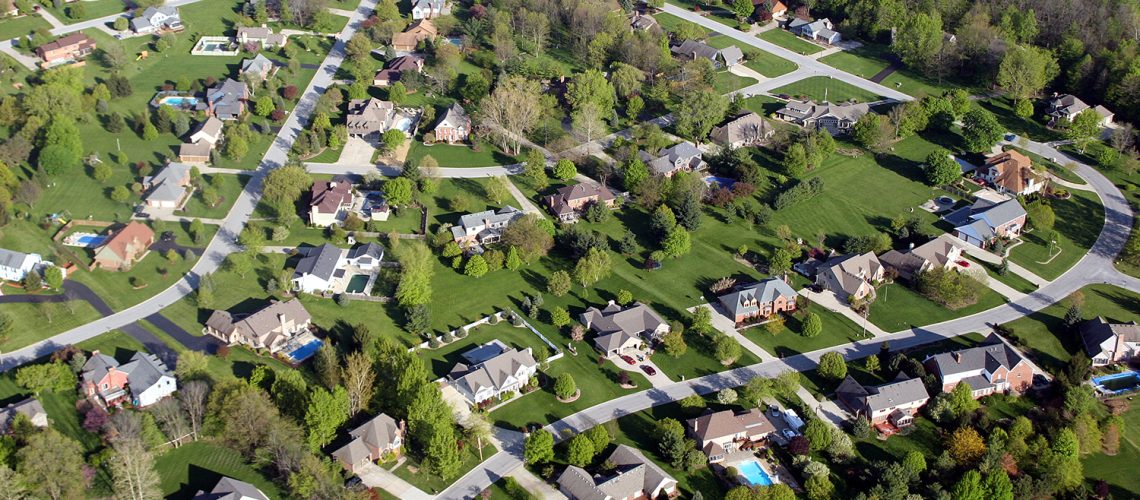In our most recent blog article, we examined how homeowner migration trends over the past few years have affected home values. We looked at why people have left bigger cities in favor of smaller metropolitan markets. These burgeoning markets, in turn, have seen significant increases in property values. This helps spark more migration, and so the cycle continues. [Click here to read the full article.]
We are very fascinated by this subject, so we wanted to dive even deeper into these migration trends. Where have people been moving in recent years? How have other demographic factors like age, wealth and overall population growth affected why and where people are choosing to move?
Population Growth
Population growth has been on a decline since the pandemic became less of a concern. The population of the United States grew by only 0.38% between the period of July 2021 and July 2022. Our own Pennsylvania was one of several states that actually experienced a population decline during that period of -0.31%. California, New York and Illinois were the other three, which is important to note as the homes of the three largest cities in America.
U.S. Census Bureau data predicts the overall population growth rate will stay around 0.3% for the next couple of decades. Meanwhile Freddie Mac expects the housing shortage to continue. The housing supply will struggle to keep up with housing demand, which is why home prices will likely remain strong despite other challenging market factors like high mortgage rates. Many homeowners are content to stay where they are.
Why Do People Move?
That said, many people will always want and need to move each year. This is where it gets interesting to study the homeowner migration trends throughout our country. Three major factors contributing to migration patterns include age, employment and cost of living. Let’s take a look at each of these factors in more detail:
Age—One of the big reasons for low housing supply in America is the baby boomer generation. They represent 44% of the country’s real estate value, 22% of the population and occupy more than 25% of all homeowner residences. They are aging and retiring, but not selling and moving out like previous generations did. Many are choosing to “retire in place” or taking their time to move, and this kind of clogs up the works in terms of real estate activity. Older boomers represent 23% of all home sellers, but only 16% of home buyers. Younger boomers make up 30% of all home sellers, and only 23% of buyers. Meanwhile Gen Xers make up 20% of sellers and 24% of buyers. In fact, all generations after boomers have more buyers than sellers in recent year. They are the ones making the moves while many boomers stay put.
Employment—Suburbs and cities will always have high housing demand because they offer the highest concentration of employment opportunities. The number of people able to work from home in recent years (along with “hybrid” work environments) has grown significantly. This has allowed for a bit more migration to less-populated areas and the migration numbers show population declines in the largest U.S. cities. However, there are still plenty of people who need to be located near work and the demand for housing will only drop so much.
Cost of Living—Perhaps the biggest factor affecting today’s homeowner migration trends is the cost of living. States with higher taxes, home prices and general living expenses have seen population decreases. As more people move to a less-expensive area, they ultimately drive up the costs of living there—and so on. If you haven’t read our previous article, it will help understand the patterns.
Where Are People Moving?
Ultimately, this begs the primary question of where people are moving to? The Southeast has seen the largest increase in population rates. States like Texas, Florida, Tennessee and the Carolinas offer warmer weather and lower costs of living. On the West Coast, we are seeing similar stats in Arizona, Nevada, Utah and Idaho. These states offer growing secondary metropolitan and suburban markets, as well as rural and resort communities. It’s not hard to understand the appeal. As these areas eventually grow too much, new hotspots will be found and the cycle will likely continue.
Life goes on and housing will always be needed. We simply find it fascinating to see how and why the trends happen. It helps provide a better view of local real estate trends within our own Southeastern Pennsylvania and Northern Delaware markets.
If you are looking to make a move or simply have questions about the real estate process, contact The Cyr Team today.

